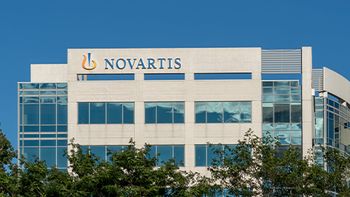
- Pharmaceutical Commerce - March/April 2012
Supply chain issues for 2012
Tompkins International's annual preview of key pharma supply chain issues
For pharmaceutical companies in 2012, supply chains will play a major role in their ability to adapt, consolidate or refocus their core business segments. The world will continue to throw new obstacles and challenges for moving products and materials into and out of specific markets and countries. But with the right supply chain configuration and adaptability, pharmaceutical and related healthcare supply chain leaders can overcome these obstacles by using internal, external, and country-specific resources to create best practice-based supply chains.
Supply chain focus to support business strategies
Supply chain leadership will be responsible for much of the successful execution and profitability in pharmaceutical and medical products, as strategies evolve and re-evolve through M&A, regulatory and pricing shifts, emerging market growth demands, and new product quality, as well as security and logistical challenges.
A vision for critical supply chain planning and execution
Due to additional pressures and uncertainties anticipated in 2012, it is important to ensure a short-planning horizon for supply chain adaptability and rapid reorganization. An integrated, adaptable global supply chain that has full visibility and shared planning is needed to achieve profitable growth.
Focus on the following in 2012:
1) Understanding Existing and New Markets and Developing a Solution for Each: This does not mean a unique solution for every market, but one that leverages the global infrastructure in place, works with established partners, and builds off those to service each market. Fulfilling an order in North America is much easier than one in rural China, but it must be done more efficiently in China. Is it time for you to initiate a global supply chain assessment?
2) Building Adaptability and Demand-Driven Responses into the Supply Chain: Risk, instability and rapid change are here to stay. As such, they challenge the validity of all planning processes: strategic planning, partnership models, contingency planning and financial planning. Being adaptive is not about having a great plan, but being able to move and change very quickly to stay ahead of the market. And via demand-driven supply chains, costs can be saved and customer satisfaction improved by responding to real demands in the market that are reported through each link of the supply chain. Now is the time to review your operational capabilities, network infrastructure and partners' capabilities, as well as gain true supply chain visibility by having a demand-driven supply chain.
3) Integrating the Business: As the industry becomes more complex, the segregation of supply chains for business units increases costs. Bringing divisions from OTC, pharma, animal health, bio-tech, and medical device together enables easier market entry and better leveraging of facilities and partners, and eliminates duplicate supply chain execution efforts and costs. Facility rationalization and consolidation go hand in hand with inventory management planning.
4) Leveraging Technology and Automation: In order to increase efficiency and meet all track and trace regulations, as well as security challenges, the requirement to implement the appropriate systems and equipment is mandatory. This ties into integrating supply chain facilities and leveraging your partners to create operations of enough size and volume to justify investments. In established markets, in-sourcing is much more viable than in emerging markets. Warehouse, distribution center, and operations systems upgrades should leverage operational experts, and harness the power of equipment and integration experts, to develop turnkey solutions.
ABOUT THE AUTHOR
Brian Hudock, a partner at Tompkins International (Raleigh, NC,
Articles in this issue
over 13 years ago
A conversation with Jeffrey Berkowitz, Walgreensover 13 years ago
Storing controlled substances safely and efficientlyalmost 14 years ago
Bringing room-temperature pharma shipping under the 'CRT' umbrellaalmost 14 years ago
Biosimilars take a big step toward the marketplacealmost 14 years ago
Adding rigor to the adverse event reporting processalmost 14 years ago
Cancer care in the US -- looking back, looking forwardalmost 14 years ago
A conversation with Chris Smith, H. D. Smithalmost 14 years ago
USP ventures into standards for supply chain integrityalmost 14 years ago
McKesson deepens ownership in Canadian retail pharmacyNewsletter
Stay ahead in the life sciences industry with Pharmaceutical Commerce, the latest news, trends, and strategies in drug distribution, commercialization, and market access.




